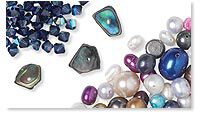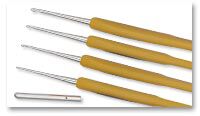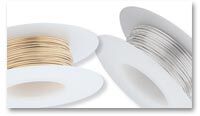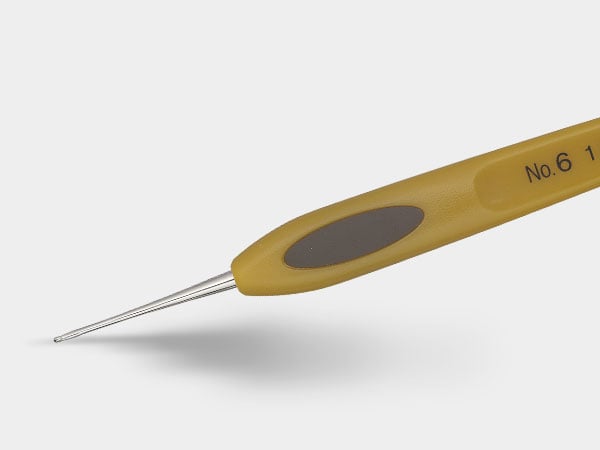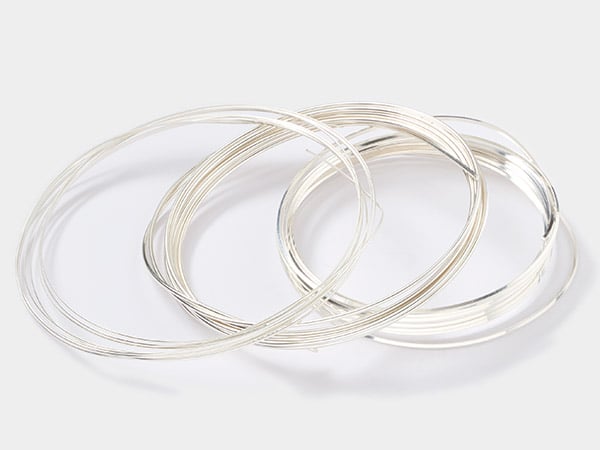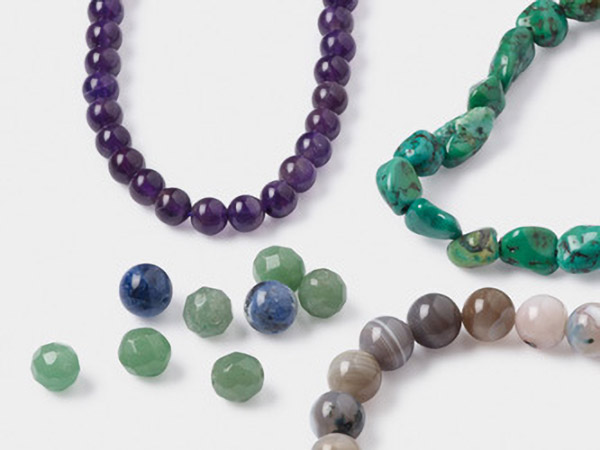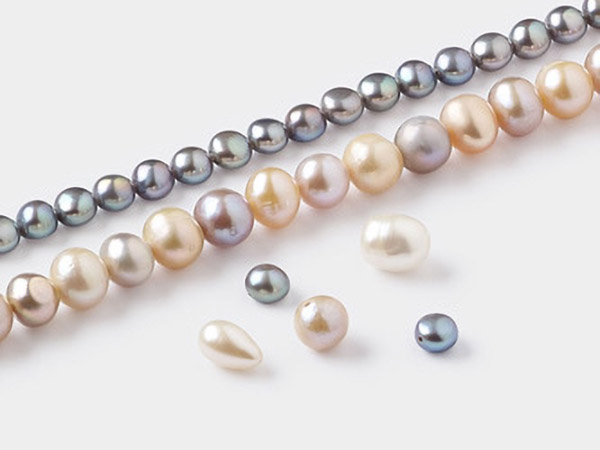How to Crochet with Wire
by Sandra Lupo, Metalsmith, Jewelry Designer and Instructor, Exclusively for Fire Mountain Gems and Beads®
The most popular question any person who sees a design made using beads crocheted on either wire or fiber is: How did you get the bead in the stitch?
Answer: Well, you just string all the beads onto the wire before you begin stitching with the hook and then you work them into each stitch as it is being formed. Now, who would have thought of that?
The second most popular question is: How do I take what I learned from my mom (or my grandmother) and translate it into crocheted wire jewelry?
Here is a formula to help break down the decisions needed when starting a wire crochet jewelry design:
Bead(s) of Choice + Hook Size + Type and Gauge of Wire = Jewelry
Hook Size
Determine the size of your stitch with the hook size. For example, an aluminum ''F'' hook gives you a stitch that approximates a 6mm opening. So a 6mm bead will sit on and take up much of the wire stitch. If you are working with a 9mm potato pearl (freshwater) you might want to work with a ''G'' or an ''H'' aluminum hook. These will create a larger stitch to house the bead within it.
Nuggets and chips look great clinging to their little wire nests which are worked with smaller steel hooks that are labeled by number rather than letters.
Type and Gauge of Wire
The type of wire and gauge of wire are important in two ways. The type of wire you choose should be soft and malleable to form in the hook yet strong enough to carry the bead. The wire should also be firm enough not to stretch out.
Ideal wires are fine silver and colored copper. They meet the need to stay malleable and are not work-hardened by the metal hook. Sterling silver, gold-filled and niobium wires can be crocheted also, but are not as malleable because they are alloyed with other metals and can work-harden, giving you less control over how you form the stitch(es).
The variety of gauges for wire crochet is wide and your choice depends on the application. Gauges to consider range from 22 to 34; 34-gauge being thinner than 22-gauge. You will want to consider working a bracelet with the thicker gauges (22 to 26-gauge), a necklace with more flexible 24 to 28-gauge and earring dangles with 28 to 34-gauge, which will yield a design that is light and lacy. You can even combine wires and stitch multiple together in varying gauges. The fun is in experimenting.
Following the basic formula, here is an example of a choker design in progress:
Using an 8mm Crystal Passions® pearl (Tahitian in color), alternating with an 8mm round silver crystal night, each stitch of a 24-gauge colored copper wire (black will do just fine), and stitched using an ''F'' hook, will have nice weight and heft to it. Crochet the length only as far as you need for this choker style. Add a silver toggle clasp or lobster claw and off you go to the dinner party!
Keep in mind when you are crocheting, whether it is yarn or wire, the terms are the same. Directions will be to ''yarn over,'' ''slip stitch'' and make a ''slip knot.'' You can follow patterns either developed for conventional crochet or adapted for wire. If you have a basic understanding, you can write your own patterns. The stitches themselves, basic chain stitch, single crochet, double crochet and triple crochet, are formed the same way, except the wire does not collapse so the stitch stays open.
There are many books and magazine articles written on crocheting with wire and beads. The types of crochet projects range from conventional jewelry to home décor, from hollow forms to sculptural works. Many fiber artists have crocheted with fiber and beads and with wire and beads. On the flip side, many jewelry artists are including fiber and textile techniques in their designs--all with metal.
Viking Knit
Speaking of hollow forms, check out the Lazee Daisee, a handy tool for creating Viking Knit mesh. While technically a different method than crochet, Viking Knit is similar in that the wire rows (or rather, rounds) build up on each other to create the final product. The solid plastic rod helps you get a grip on your project and prevents the mesh from collapsing while you work. When you're done, you'll have a woven wire tube to use in a multitude of designs!
Seek out weaving classes in your region. Pick up a variety of hooks, wire and beads and go weave. Yay crochet!
Have a question regarding this project? Email Customer Service.
Copyright Permissions
All works of authorship (articles, videos, tutorials and other creative works) are from the Fire Mountain Gems and Beads® Collection, and permission to copy is granted for non-commercial educational purposes only. All other reproduction requires written permission. For more information, please email copyrightpermission@firemtn.com.


